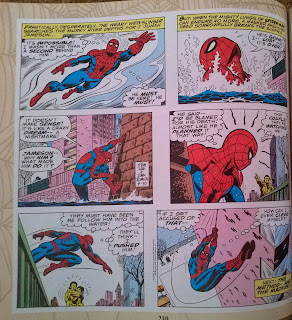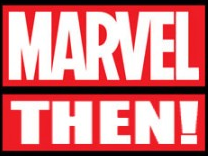WONDER
WOMAN: THE TWELVE LABORS
(DC, First
Printing, 2012;
Softcover)
Collects
Wonder
Woman
#212-222 (cover dates July, 1974- March, 1976)
Writers:
Martin Pasko, Elliot S. Maggin, Cary Bates, and Len Wein
Artists:
Pencilers- Curt Swan, John Rosenberger, Irv Novick, Dick
Dillin, Kurt Schaffenberger, Dick Giordano, and Jose Delbo; Inkers-
Vince Colletta, Tex Blaisdell, Phil Zupa, Kurt Schaffenberger,and
Dick Giordano
Coke
Vs. Pepsi. GM Vs. Ford. Marvel Vs. DC. These were the battles that in
my mind as a child there could only be one winner and one loser,
seemingly oblivious to the concept that one could like both. I grew
up a Marvel kid from 1979-on, snobbishly thumbing my nose up at
anything published by the Distinguished Competition as automatically
inferior. A friend of mine that I met in adulthood was the flipside,
believing DC to be the way. I once thought that DC fans were like
Jehovah's Witnesses, well-intentioned if misguided, but I have long
since softened my stance.
That
brings us to this book, an eleven issue beast of an arc that there is
no way that Marvel would have attempted during this point in time.
Wonder Woman was a role model for the girls who would grow up to
become the feminists of the women's lib movement of the 1970s, and it
makes perfect sense for them to give her a spin in the then-zeitgest.
This touches on the late '60s reboot where Wonder Woman shed her
costume and became more “now”, which was collected across four
trades that I may actually get around to reading and review for you
someday. It turns out that that Wonder Woman's memories were hidden
by Queen Hippolyta so that she wouldn't remember being powerless in
Man's World. This is what the kids call a “ret-con”.
 |
| Imagine the Internet OUTRAGE if this exchange occurred in a comic book today! |
The
JLA wants her to rejoin them, but Wonder Woman feels unsure of
herself since she does not have all of her memories and decides to
embark on “Twelve Labors” like Hercules to prove to herself that
she is worthy. This book almost feels like a Justice League book, as
they are featured in each issue with a different member stalking
following her around and reporting their findings to the rest of the
team in each issue.
My
suspension of disbelief was pushed beyond the breaking point in three
places. One: The fact that her Magic Lasso is elastic enough to
stretch from the ground to the top of a skyscraper. If this were the
case then how could it keep anyone captive? Two: Her Robot Plane (or
Invisible Plane) which responds to mental waves. While not entirely
without precedent in the Golden Age version of the character,
something about it felt off. Three: Wonder Woman's seemingly
intermittent ability to fly and/or glide on wind currents. It is this
lack of consistency that cost DC early on in life for me.
This
was a great read and a good time. If you are not a cynical bastard
and like fun superhero comics you can't go wrong with this
book...especially since it is now out of print. I enjoy the fact that
it often takes so long for me to rotate books through my backlog that
they are often out of print by the time that I get around to reading
them. It is a scientific fact that out of print books are more
enjoyable to read than in print books.
Junk
Food For Thought rating: 4.5 out of 5.
The
OCD zone-
DC needs to get in the ring with Marvel and do more of these types of
collections. Eleven consecutive issues clocking in at 232 pages. I
would be all over a comprehensive line of trades that cover this kind
of ground.
Linework
and Color restoration: The integrity of the linework is
incredible. No complaints there. The original color palette, while
faithfully maintained, is marred by inauthentic gradient shade blends
which have a harsh look to them. A softer, hand colored (on computer)
approach would have made things perfect. The degree of cheesy,
inauthentic blends vary from issue to issue, likely depending on who
worked on it.
Paper
stock: Typical toilet paper stock that DC uses in collections
of vintage material. This stuff will brown and yellow over time and
it feels cheap.
Binding:
Perfect bound trade paperback.
Cardstock
cover notes:
Laminated cardstock.
























